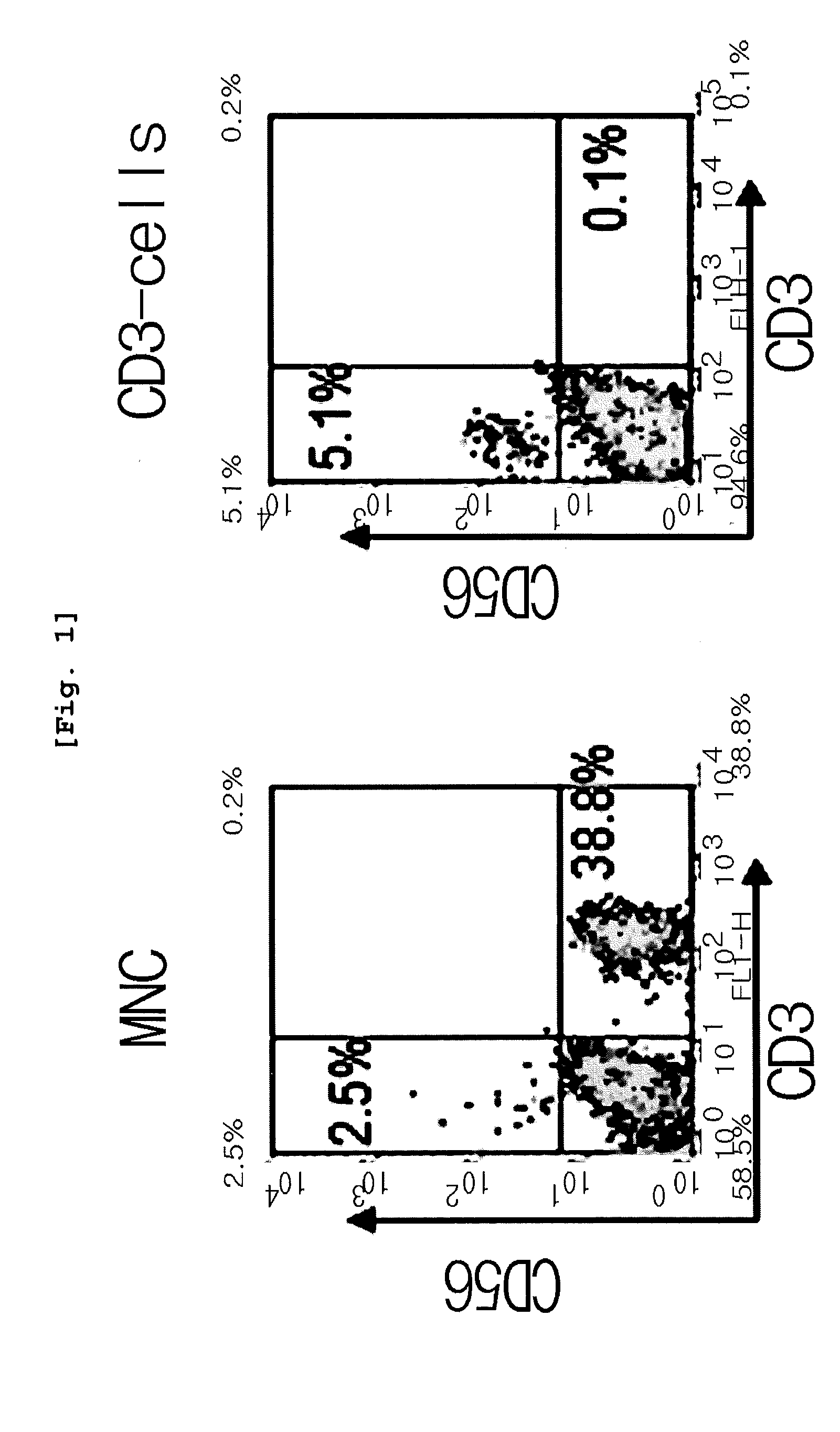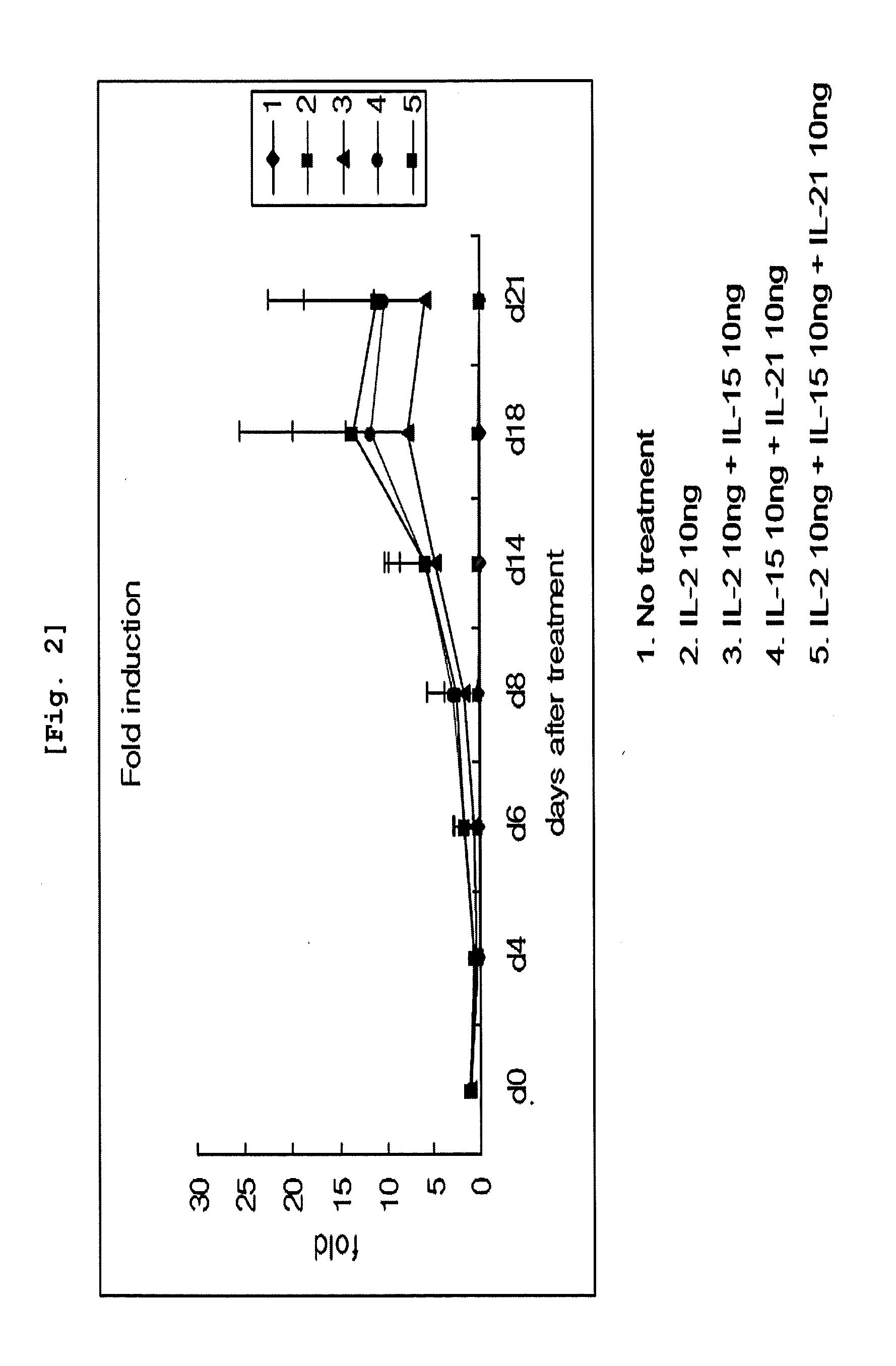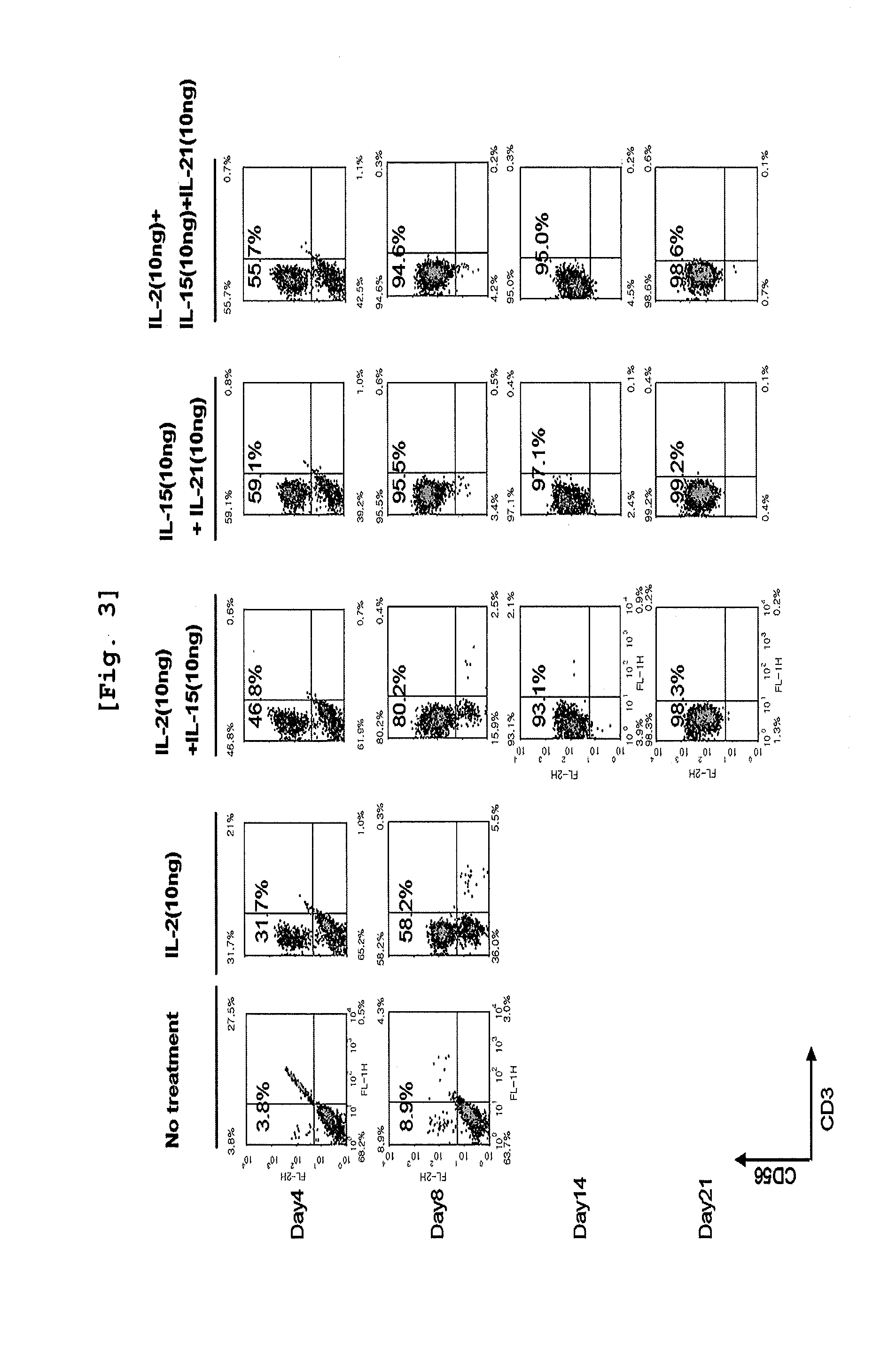Method for Efficiently Proliferating and Differentiating Natural Killer Cells from Umbilical Cord Blood
a technology of natural killer cells and umbilical cord blood, which is applied in the field of efficiently proliferating and differentiating natural killer cells from umbilical cord blood, can solve the problems of long time and high cost to induce the differentiation of nk cells, and it is actually very difficult to secure enough nk cells, so as to improve the quality of life, facilitate the proliferation and differentiation of nk cells, and increase the effect of cytotoxicity
- Summary
- Abstract
- Description
- Claims
- Application Information
AI Technical Summary
Benefits of technology
Problems solved by technology
Method used
Image
Examples
example 1
Preparation of CD3 Negative Cells from Umbilical Cord Blood Originated Mononuclear Cells
[0086]Umbilical cord blood provided from hospitals (Department of Obstetrics & Gynecology, Konyang University Hospital and Department of Obstetrics & Gynecology, Chungnam National University Hospital, Korea, Each hospital IRB test was passed) for the purpose of research was diluted with RPMI 1640 at the ratio of 2:1. The prepared umbilical cord blood was carefully loaded on the upper part of Ficoll-Paque, followed by centrifugation at 20,000 rpm for 30 minutes to obtain mononuclear cell layer (MNC layer). Erythrocytes were eliminated from the cells obtained from the mononuclear cell layer to obtain mononuclear cells. Microbeads (Miltenyi Biotech) were added to the obtained mononuclear cells, followed by labeling. CD3 positive cells were eliminated by using CS column and Vario MACS to obtain CD3 negative cells. Particularly, CD3 microbeads (Miltenyi Biotech) recognized CD3ε chain so as to give mag...
example 2
Effect of Cytokines on Proliferation of CD3 Negative Cells and Differentiation to NK Cells
[0087]CD3 negative cells isolated from umbilical cord blood were inoculated on 12-well plate (Falcon, USA) at the concentration of 1×106 cells / ml. The cells were classified as the group non-treated with cytokine, the group treated with IL-2 alone, the group treated with IL-2 and IL-15 together, the group treated with IL-15 and IL-21 together, and the group treated with all of those three cytokines, IL-2, IL-15, and IL-21, followed by culture on Myelocult (Stem cell Technology) complete medium at 37□, 5% CO2 incubator for 21 days. When the cell concentration reached 1×106 cells / ml during the culture, the cells were distributed for sub-culture on another medium which had the same composition as the one primarily used. Cell number was counted on day 4, day 8, day 14, day 18, and day 21. The cells were conjugated with CD3 antibody and CD56 antibody on day 4, day 8, day 14, and day 21, followed by F...
example 3
Effect of Cytokines on NK Cell Activity in CD3 Negative Cells
[0090]CD3 negative cells were treated with different combinations of cytokines as shown in Example 2 to induce differentiation to NK cells. Then, 51Cr secretion and lactate dehydrogenase (LDH) activity were investigated in those groups treated with the combination of IL-2, IL-15, and IL-21, and treated with the combination of IL-15 and IL-21, which demonstrated higher proliferation rate and differentiation rate (FIG. 5).
[0091]The differentiated NK cells were washed, followed by culture in 96 well round bottom plate loaded with the target cells, 51Cr-labeled K562 cells (104 / well), considering the ratio of effector:target, for 4 hours. Upon completion of the culture, 100 μl of culture supernatant was obtained, followed by the measurement of radioactivity by using γ-counter. And, the differentiated NK cells were washed, followed by culture in 96 well round bottom plate loaded with the target K562 cells, considering the ratio ...
PUM
| Property | Measurement | Unit |
|---|---|---|
| concentration | aaaaa | aaaaa |
| concentration | aaaaa | aaaaa |
| magnetic | aaaaa | aaaaa |
Abstract
Description
Claims
Application Information
 Login to View More
Login to View More - R&D
- Intellectual Property
- Life Sciences
- Materials
- Tech Scout
- Unparalleled Data Quality
- Higher Quality Content
- 60% Fewer Hallucinations
Browse by: Latest US Patents, China's latest patents, Technical Efficacy Thesaurus, Application Domain, Technology Topic, Popular Technical Reports.
© 2025 PatSnap. All rights reserved.Legal|Privacy policy|Modern Slavery Act Transparency Statement|Sitemap|About US| Contact US: help@patsnap.com



